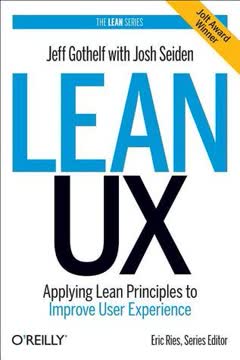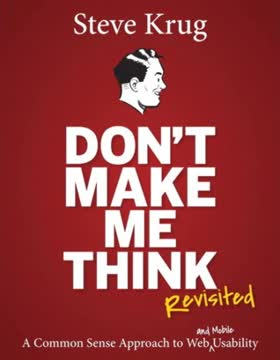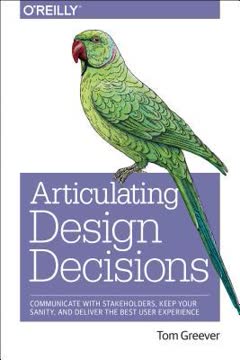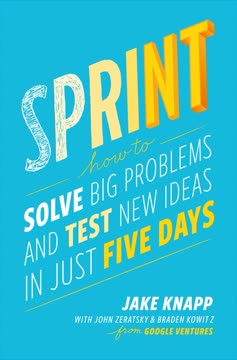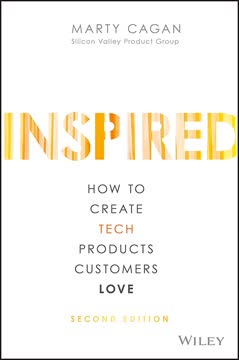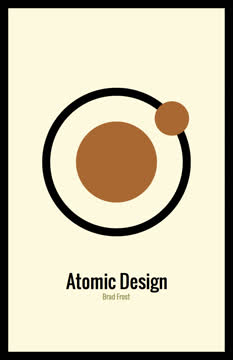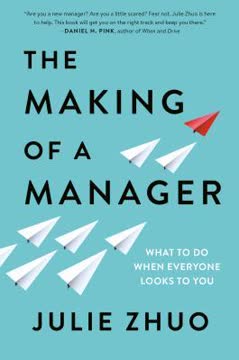نکات کلیدی
1. طراحی دربارهی ارتباط با بازار و نتایج معنادار است، نه فقط زیباییشناسی
"طراحی فقط دربارهی زیبایی نیست؛ بلکه دربارهی ارتباط با بازار و نتایج معنادار است."
فراتر از جذابیت بصری. طراحی در صنعت فناوری از ایجاد رابطهای بصری جذاب فراتر رفته است. شرکتهای برتر مانند فیسبوک، گوگل و آمازون از طراحان انتظار دارند نقشی ایفا کنند که بر تفکر محصول و تأثیر بر کسبوکار تمرکز دارد. این تغییر نیازمند آن است که طراحان اهداف شرکت، نیازهای کاربران و چگونگی ارتباط کارشان با اهداف گستردهتر کسبوکار را درک کنند.
ارزش کسبوکاری طراحی. طراحانی که میتوانند به شرکتها در حل مشکلات کسبوکاری کمک کنند، به طور فزایندهای ارزشمند میشوند. آنها باید آگاه باشند از:
- چگونه طراحی بر نتایج کسبوکاری تأثیر میگذارد
- اهمیت طراحی در سازمان
- چگونه طراحی را بهینهسازی کنند تا به شاخصهای کلیدی عملکرد (KPI) دست یابند
- روشهای اندازهگیری عملکرد طراحی
2. تفکر محصول و آگاهی کسبوکاری مهارتهای حیاتی برای طراحان هستند
"تفکر قوی محصول به این معناست که شما میدانید نتیجهی خوب چیست و چگونه تجربهای طراحی کنید که به آن نتایج خوب منجر شود."
مهارتهای ضروری. تفکر محصول و آگاهی کسبوکاری برای طراحان جهت پیشرفت در حرفهشان و ایجاد کارهای تأثیرگذار حیاتی هستند. این مهارتها شامل:
- درک اهداف کسبوکاری شرکت
- دانستن چگونگی ارتباط کار طراحی با این اهداف
- شناسایی کاربران هدف و نیازهای آنها
- اندازهگیری موفقیت کار طراحی
پر کردن شکاف. بسیاری از طراحان با این مهارتها به دلیل:
- کمبود آموزش در جنبههای کسبوکاری طراحی
- تأکید بیش از حد بر مهارتهای بصری در جوامع طراحی
- ناهماهنگی بین انتظارات شرکت و مهارتهای طراح
- منابع محدود برای تمرین تفکر محصول
3. چارچوب حل تمرینات طراحی محصول: 5W1H
"وظیفهی شما در تمرین مصاحبه این است که نشان دهید چگونه به این سوالات پاسخ میدهید و یک فرآیند را دنبال میکنید."
چارچوب 5W1H. این رویکرد به طراحان کمک میکند تا تفکر و فرآیند حل مسئله خود را ساختار دهند:
- چرا: هدف محصول یا ویژگی را درک کنید
- چه کسی: مخاطب هدف را تعریف کنید
- کی و کجا: زمینه و شرایط استفاده را درک کنید
- چه: ایدهها و راهحلهای ممکن را فهرست کنید
- چگونه: موفقیت راهحل را اندازهگیری کنید
فرآیند برتر از کمال. دنبال کردن یک فرآیند ساختاریافته نشان میدهد:
- مهارتهای تفکر انتقادی
- توانایی پرسیدن سوالات مرتبط
- درک نیازهای کاربر و اهداف کسبوکاری
- ظرفیت اولویتبندی و تصمیمگیری طراحی
4. درک هدف و تعریف مخاطب اولین گامهای حیاتی هستند
"راهی عالی برای شروع راهحل و ارائهی شما این است که تعریف کنید به چه چیزی هدف دارید و چگونه به کسبوکار کمک میکند."
وضوح هدف. با بیان واضح:
- مسئلهای که حل میشود
- اهمیت محصول
- تأثیر بالقوه آن بر کاربران و کسبوکار
تعریف مخاطب. کاربران هدف را شناسایی و توصیف کنید:
- جمعیتشناسی (سن، جنسیت، مکان)
- روانشناسی (علاقهها، ارزشها، سبک زندگی)
- نیازها و مشکلات خاص
- زیرگروههای بالقوه درون مخاطب اصلی
5. بررسی زمینه، نیازها و ایدهها قبل از اولویتبندی راهحلها
"برای درک انواع مختلف مخاطبان برای محصول، از خود بپرسید — دستهبندیهای افرادی که انگیزههای متفاوتی برای استفاده از این محصول دارند چیست؟"
زمینه و نیازها. تحلیل کنید:
- کی و کجا محصول استفاده خواهد شد
- احساسات و انگیزههای کاربر
- داستانها و سناریوهای خاص کاربر
تولید ایده. راهحلهای ممکن را با توجه به:
- انواع مختلف محصول (دیجیتال، فیزیکی، ترکیبی)
- پلتفرمهای مختلف (موبایل، دسکتاپ، پوشیدنی)
- گزینههای رابط (گرافیکی، صوتی، AR/VR)
اولویتبندی. ایدهها را بر اساس:
- تأثیر بر کاربران و کسبوکار
- تلاش برای پیادهسازی
- دسترسی و ارزش بالقوه
6. حل مسئله با طراحی کاربرمحور و اندازهگیری موفقیت
"انجام ضعیف آن به طور قابل توجهی شانس شما برای استخدام را کاهش میدهد. در این مرحله، باید مهارتهای UI/UX خود را نشان دهید."
فرآیند طراحی. تمرکز بر:
- ایجاد جریانها و سفرهای کاربر
- توسعه وایرفریمها و نمونههای اولیه
- در نظر گرفتن دسترسی و قابلیت استفاده
معیارهای موفقیت. تعریف کنید چگونه اثربخشی راهحل را اندازهگیری کنید:
- تعامل و نگهداشت کاربر
- نرخها و زمانهای تکمیل وظیفه
- تأثیر بر درآمد یا صرفهجویی در هزینه
- امتیاز خالص ترویجکننده (NPS)
7. ارائهی مؤثر راهحلهای طراحی کلید موفقیت است
"از آنجا که هدف این تمرینات ارزیابی تفکر طراح است، ارائه باید شامل تمام تفکری باشد که به راهحل منجر شده است."
ساختار ارائه. شامل:
- بیان مسئله و اهداف
- تعریف مخاطب هدف
- تحلیل زمینه و نیازهای کاربر
- فرآیند تولید ایده و اولویتبندی
- توضیح دقیق راهحل
- معیارهای موفقیت و برنامه اندازهگیری
نکات ارتباطی:
- تصمیمات طراحی و دلایل آنها را به وضوح توضیح دهید
- دربارهی نقاط قوت و ضعف راهحل بحث کنید
- آمادهی دریافت بازخورد و پاسخ به سوالات باشید
- اشتیاق و اعتماد به نفس در کار خود را نشان دهید
8. شرکتها از تمرینات طراحی برای ارزیابی مهارتها و فرآیند تفکر کاندیداها استفاده میکنند
"این تکنیک بسیار خوبی است زیرا هیچ تقلبی وجود ندارد (مانند نشان دادن کار پورتفولیو از یک تلاش تیمی بزرگ)."
هدف از تمرینات طراحی. آنها به شرکتها اجازه میدهند:
- مهارتهای حل مسئله کاندیداها را ارزیابی کنند
- توانایی آنها در کار تحت فشار را بسنجند
- مهارتهای ارتباطی و ارائه را ارزیابی کنند
- فرآیند طراحی و تصمیمگیری آنها را درک کنند
انواع تمرینات:
- وایتبرد زنده (15-40 دقیقه)
- تمرینات در محل (1 ساعت با ارائه)
- تمرینات خانگی (8 ساعت تا یک هفته)
9. انواع مختلف تمرینات طراحی جنبههای مختلفی از تواناییهای طراح را آزمایش میکنند
"کاندیداها تنها بر اساس نتیجه نهایی قضاوت نمیشوند. هدف از تمرینات این است که بفهمیم کاندیدا چگونه به مسئله نزدیک میشود، فرآیند او چیست و چگونه با تیم کار میکند."
مهارتهای ارزیابی شده:
- تفکر محصول و آگاهی کسبوکاری
- رویکرد طراحی کاربرمحور
- مهارتهای طراحی بصری و UI
- تواناییهای ارتباطی و ارائه
- توانایی دریافت بازخورد و انتقاد
مناطق تمرکز تمرین:
- توسعه محصول جدید
- بهبود محصولات موجود
- وظایف مفهومی
- چالشهای مبتنی بر معیارهای کسبوکاری
10. طراحان باید با تمرین تفکر محصول برای مصاحبهها آماده شوند
"مهارتهای طراحی محصول و UX خود را تمرین کنید. برای مصاحبه شغلی بعدی خود آماده شوید."
استراتژیهای آمادهسازی:
- چارچوب 5W1H را مطالعه و تمرین کنید
- روی تمرینات طراحی نمونه کار کنید
- رویکردی ساختاریافته برای حل مسئله توسعه دهید
- مهارتهای ارائه و ارتباطی را بهبود بخشید
منابع برای تمرین:
- چالشهای طراحی آنلاین و مطالعات موردی
- جوامع و انجمنهای طراحی
- برنامههای راهنمایی
- پروژههای خودآغاز با تمرکز بر مشکلات کسبوکاری
آخرین بهروزرسانی::
FAQ
What's "Solving Product Design Exercises: Questions & Answers" about?
- Purpose of the book: The book by Artiom Dashinsky is designed to help designers prepare for product design exercises, which are often part of job interviews in tech companies.
- Focus on skills gap: It addresses the skills gap in design education, particularly in understanding how design impacts business and solving business problems.
- Framework and exercises: The book provides a structured framework for solving design exercises and includes practical examples and exercises to practice.
Why should I read "Solving Product Design Exercises: Questions & Answers"?
- Interview preparation: It is particularly useful for those preparing for product design, UX, and UI/UX design interviews.
- Skill development: The book helps in developing product thinking and understanding the role of design in business contexts.
- Career advancement: It offers insights for entry-level to senior designers on how to progress in their careers and improve their portfolios.
What are the key takeaways of "Solving Product Design Exercises: Questions & Answers"?
- Design beyond aesthetics: Successful designers understand the business impact of design, not just its visual aspects.
- Structured approach: The book emphasizes a structured approach to solving design exercises, focusing on understanding goals, audience, and context.
- Practical exercises: It includes real-world exercises and solutions to help designers practice and improve their skills.
What is a design exercise according to Artiom Dashinsky?
- Definition: A design exercise is a challenge given to candidates during interviews to solve a product design problem and explain their decisions.
- Types: There are live whiteboarding, on-site, and take-home exercises, each testing different skills.
- Purpose: These exercises evaluate a designer's problem-solving process, product thinking, and ability to communicate their ideas.
How does Artiom Dashinsky suggest solving a product design exercise?
- Framework: Dashinsky provides a seven-step framework: Understand your goal, Define the audience, Understand the context and needs, List ideas, Prioritize and choose an idea, Solve, and Measure success.
- Process over solution: Emphasizes following a process rather than jumping straight to a solution to ensure a comprehensive understanding of the problem.
- Critical thinking: Encourages asking questions, making assumptions, and being critical about solutions to demonstrate thoroughness.
What is the "5W1H" technique mentioned in the book?
- Information gathering: The 5W1H technique involves answering six questions: Why, Who, When, Where, What, and How.
- Application in design: It is used to structure the approach to solving design exercises, ensuring all aspects of the problem are considered.
- Adaptability: While based on journalism and research methods, it is adapted for product design to help designers think holistically.
What are some common design exercises included in the book?
- Examples: Designing a kiosk interface, a self-publishing platform for Amazon, a dashboard for freelancers, and improving the ATM experience.
- Variety of challenges: Exercises cover different aspects of design, from interface design to solving business problems.
- Practice opportunities: These exercises provide opportunities for designers to practice and refine their skills in a structured manner.
How does the book address the "Dribbblisation of Design"?
- Visual obsession: The book critiques the focus on visual aesthetics over functionality, a trend exacerbated by platforms like Dribbble.
- Business impact: Emphasizes the importance of understanding how design can solve business problems and not just create appealing visuals.
- Skill development: Encourages designers to develop skills beyond aesthetics, such as product thinking and business strategy.
What advice does Artiom Dashinsky give for presenting a design solution?
- Comprehensive presentation: Include all steps of the framework in the presentation to demonstrate the thought process.
- Clarity and confidence: Be clear about the "why" behind design decisions and be prepared to discuss pros and cons.
- Engagement: Use storytelling and visual aids to engage the audience and clearly communicate the solution.
What are some key interviews included in the book?
- Industry insights: Interviews with design leaders like Bobby Ghoshal, Justin Maxwell, and Helen Tran provide insights into the design industry.
- Career advice: Topics include the importance of business awareness, skills for aspiring founders, and overlooked skills in design.
- Practical tips: Interviews offer practical advice for designers looking to advance their careers or transition into leadership roles.
What are the best quotes from "Solving Product Design Exercises: Questions & Answers" and what do they mean?
- Design's business role: "Design isn’t just about beauty; it’s about market relevance and meaningful results." This highlights the importance of design in achieving business goals.
- Product thinking: "Strong product thinking means that you understand what a good outcome is and how to design an experience that would lead to those good outcomes." Emphasizes the need for designers to think beyond visuals.
- Process importance: "The single most important thing you should remember while solving exercises is to follow a process." Stresses the value of a structured approach in design.
How can "Solving Product Design Exercises: Questions & Answers" help business leaders?
- Hiring insights: Provides guidance on how to interview and evaluate design candidates effectively.
- Understanding design's value: Helps business leaders understand the mindset of successful designers and the role of design in achieving business objectives.
- Defining roles: Offers insights into defining the design role within an organization to maximize its impact.
نقد و بررسی
کتاب حل تمرینهای طراحی محصول با استقبال بسیار مثبت خوانندگان مواجه شده است و آنها از چارچوب عملی این کتاب برای مواجهه با چالشهای طراحی تقدیر میکنند. بسیاری از خوانندگان این کتاب را برای آمادگی در مصاحبهها و ساختن پرتفوی خود بسیار ارزشمند میدانند. طراحان با سطوح مختلف تجربه از رویکرد ساختاریافته به حل مسئله و ارتباط کتاب با سناریوهای دنیای واقعی قدردانی میکنند. چندین نفر از داوران این کتاب را به خاطر کمک به آنها در دریافت پیشنهادات شغلی مورد ستایش قرار دادهاند. تمرینها و مثالها بهویژه مفید تلقی میشوند و سبک نوشتاری کتاب بهعنوان واضح و مختصر توصیف شده است.
Similar Books
